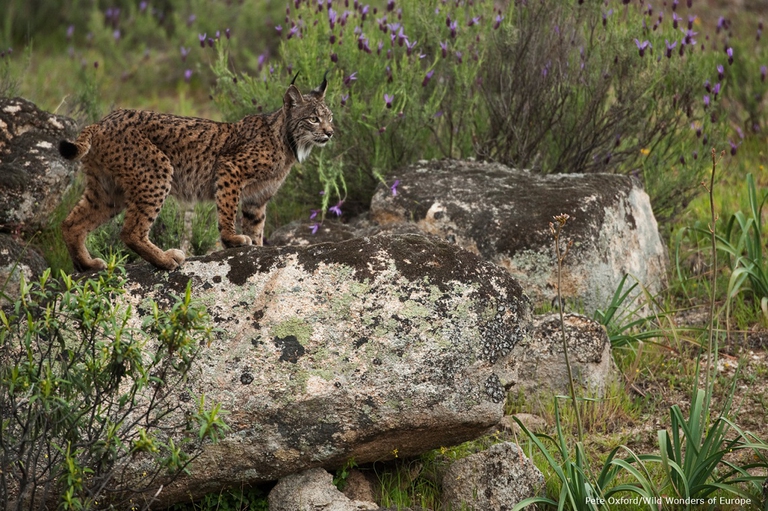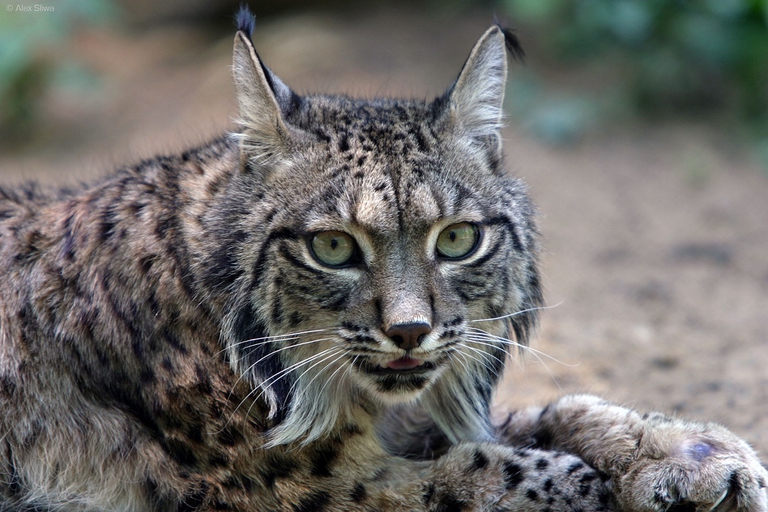
Our species took its first steps in a world covered in trees. Today, forests offer us sustenance, shelter, and clean the air that we breathe.
In 2002, only 14 years ago, the Iberian lynx (Lynx pardinus) held a not so enviable title: it was the world’s most endangered wild cat species. A few years have passed by and this elusive feline is not safe yet, but its future seems to be a little rosier. The 2015 census released by
In 2002, only 14 years ago, the Iberian lynx (Lynx pardinus) held a not so enviable title: it was the world’s most endangered wild cat species. A few years have passed by and this elusive feline is not safe yet, but its future seems to be a little rosier.
The 2015 census released by the government of Andalusia, Spain, on 4 April shows a significant increase in the Iberian lynx population, which has reached the highest number of individuals since the 2002 negative record. Previous census, carried out in 2014, recorded the presence of 327 individuals, while the number now has risen to 404.
The survey identified 120 breeding female lynxes divided into 5 areas of the Iberian Peninsula: 4 in Spain (Doñana, Sierra Morena, Montes de Toledo, and Valle Matachel), and 1 in Portugal (Vale do Guadiana). “WWF welcomes the heartening results of the 2015 Iberian Lynx census,” said Luis Suarez, head of WWF-Spain’s species programme. “This is a historic landmark that comes with the heavy responsibility of strengthening our commitment and conservation actions to protect this most endangered species.”
Despite its population is rebounding, the Iberian lynx remains at risk mainly due to a decrease in rabbits, these felines’ main preys. A research shows that rabbit population fell by over 50 per cent in some areas critical to lynxes, due to a new strain of viral haemorrhagic disease.
“It is essential that all competent authorities take action on the threats to rabbits and begin to implement better monitoring plans and actions for species recovery,” said Luis Suarez. “Otherwise, we will see a real ecological catastrophe given the key role of the rabbit in Mediterranean ecosystems”. Another threat to lynxes is represented by cars: high lynx mortality caused by road accidents has been registered with a total of 51 lynx killed on the roads over the past three years.
The study also reveals that lynxes are expanding beyond the borders of Andalusia, reaching the Spanish autonomous communities of Castilla-La Mancha and Extremadura, and Portugal. Despite experts say it’s too soon to declare that populations have gained new ranges, mortality rates in reintroduction areas are less than the traditional rate of 50 per cent.
“The increasing numbers and expansion of Iberian lynx show that concerted conservation efforts pay off,” said Carlos Drews, director of WWF’s global species programme. “This endangered cat is symbolic of the plight of numerous threatened species worldwide that require sustained conservation efforts over several decades. But the job is not completed yet – it’s on the right track, but still distant from a full recovery”.
Siamo anche su WhatsApp. Segui il canale ufficiale LifeGate per restare aggiornata, aggiornato sulle ultime notizie e sulle nostre attività.
![]()
Quest'opera è distribuita con Licenza Creative Commons Attribuzione - Non commerciale - Non opere derivate 4.0 Internazionale.
Our species took its first steps in a world covered in trees. Today, forests offer us sustenance, shelter, and clean the air that we breathe.
Poachers in Africa are encroaching on wildlife land and killing rhinos in travel hot spots now devoid of visitors due to the coronavirus pandemic.
Actor and environmental activist Leonardo DiCaprio has contributed two million dollars to a fund to protect Virunga National Park in Congo from threats such as terrorism, the coronavirus and poaching.
For the first time in seventeen years, Iceland’s two main whaling companies won’t resume whale hunting. The announcement concerns this year’s season but could carry into the future.
The relationship between the coronavirus and wildlife is complex: while the pandemic may lead to a reduction in the illegal trade in wild animals, it may also encourage it in other respects.
The largest coral reef in the world is severely threatened by climate change, but researchers are developing strategies that could contribute to saving the Great Barrier Reef.
NGO Free the Bears has opened a mountain sanctuary for moon bears in Laos. With the government’s help, it aims to close all bile farms by 2022.
Seychelles have extended its marine protected area, which now covers over 400,000 square kilometres, an area larger than Germany.
The tapir was reintroduced into Brazil’s Atlantic Forest, the country’s most at-risk ecosystem. The species can play a key role in the forest’s recovery.










